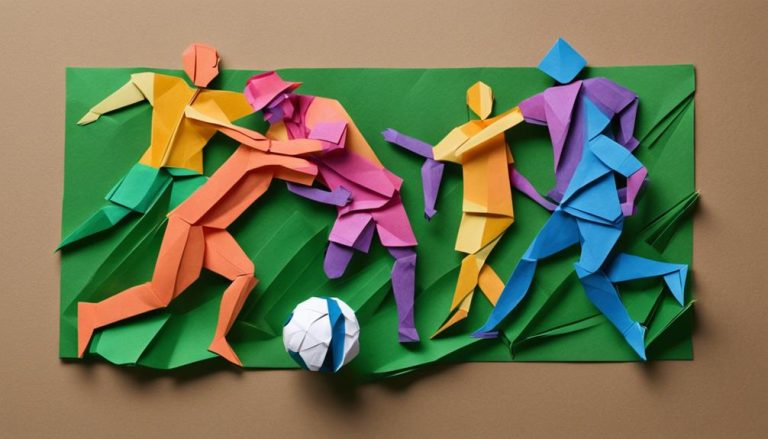General Rules of Drone Racing
You'll need to demonstrate your drone operation, safety, and regulatory knowledge through exams and flight tests. Drones are capped at 250 mm and 250 grams, with 4S LiPo batteries and 2700kV motors, ensuring a level playing field. Racecourses feature varied terrain, tight turns, and obstacles, challenging your piloting skills. Strict procedures govern takeoff, landing, and altitude/speed limits to prioritize safety. Adherence to the rules – from communication etiquette to scoring – is essential. Violating them can lead to penalties or disqualification. Mastering this rulebook grants thrilling drone racing experiences.
Pilot Licensing and Certification
To participate in drone racing events, you'll need to obtain the appropriate pilot licensing and certification. Depending on the governing organization overseeing the race, you may be required to demonstrate your knowledge of drone operation, safety protocols, and applicable regulations through written exams and practical flight tests. These license requirements guarantee that you possess the necessary skills and understanding to operate your drone safely and responsibly in a competitive environment.
Your pilot training should cover topics like aerodynamics, flight mechanics, emergency procedures, and race-specific rules and regulations. You'll need to master the technical aspects of drone piloting, as well as develop the quick reflexes and spatial awareness required to navigate complex racecourses. By meeting these certification standards, you can liberate yourself to push the limits of your drone's performance while prioritizing the safety of yourself and others.
Aircraft Specifications and Regulations
When it comes to drone racing, you'll need to be mindful of the aircraft specifications and regulations. The size and weight of your drone must adhere to the competition's guidelines, and you'll also need to verify that your drone's battery and motor meet the required standards. These technical details are vital for maintaining a level playing field and safe competition.
Drone Size and Weight
What size and weight requirements must your drone adhere to for competitive racing? Generally, the maximum size for racing drones is 250 millimeters, with a maximum takeoff weight of 250 grams. These aircraft specifications and regulations guarantee a level playing field and safe operation during high-speed drone races.
Drone size limitations are strictly enforced to guarantee fair competition and prevent larger, more powerful drones from dominating the field. The compact size also enhances maneuverability, allowing pilots to navigate tight courses with precision. As for drone weight requirements, the 250-gram limit helps maintain stability and control, particularly during sharp turns and aggressive maneuvers.
These regulations aren't just about creating an equal playing field. They also prioritize safety, guaranteeing that drones remain agile and responsive, reducing the risk of collisions or crashes that could endanger pilots or spectators. By conforming to these standards, you can compete on a level footing and showcase your piloting skills without compromising the integrity of the race.
Battery and Motor Regulations
In addition to size and weight limits, competitive drone racing also imposes strict regulations on the batteries and motors powering these high-performance aircraft. Typically, you'll be restricted to using 4S lithium polymer (LiPo) batteries with a maximum voltage of 16.8V, guaranteeing a consistent power output across the field. Similarly, the motors must adhere to specific kV (rpm per volt) ratings, often capped at 2700kV, to maintain a level playing field and prevent any single competitor from gaining an unfair advantage through superior propulsion.
To guarantee fair and safe racing, the regulations also emphasize:
- Charge monitoring to prevent battery overloading and potential fires
- Heat management strategies to mitigate motor wear and tear
- Mandatory pre-race battery and motor inspections
- Strict enforcement of power output limits
- Penalties for any modifications or tampering with approved components
These battery and motor regulations are pivotal for creating an environment where skill, strategy, and piloting ability determine the winner, rather than technological disparities.
Course Design and Obstacles
The course layout and obstacle arrangement are essential elements in drone racing, as they present the pilots with a multifaceted challenge that tests their skill, reaction time, and aircraft maneuverability. Course designers must strike a careful balance between thrilling, technically demanding obstacles and spectator safety. Varied terrain, such as changes in elevation, tight turns, and obstacles like gates and hoops, compel racers to expertly navigate their drones through the course. Spectator safety is paramount, with course boundaries and protective netting ensuring the audience can enjoy the races without risk of collision or debris.
The obstacles themselves may include a mix of fixed and dynamic elements, further heightening the difficulty. Pilots must anticipate and react to these challenges in real-time, making split-second decisions to maintain speed and precision. This dynamic interplay between course design, obstacles, and pilot skill is what defines the enchanting essence of drone racing, enthralling both participants and spectators alike.
Launching and Landing Procedures
Typically, drone pilots must carefully coordinate their launch and landing procedures to guarantee safe and efficient operations during a race. Proper takeoff and touchdown techniques are critical for maintaining control of the aircraft and minimizing disruptions to the competition. You'll need to become proficient in smoothly accelerating your drone off the ground, as well as executing precise landings to safeguard against damage or interference with other participants.
When it comes to takeoff considerations, key factors include:
- Wind direction and speed
- Proximity to obstacles or other drones
- Stability and balance of the launch platform
- Smooth application of throttle for a controlled liftoff
- Monitoring telemetry data during the ascent
For landing site selection, you should prioritize:
- Clear, obstacle-free zones with ample space
- Minimal interference from other racers or spectators
- Firm, level ground to secure a smooth touchdown
- Visibility of the landing area from your piloting position
- Ability to flare the drone and cut throttle at the right moment
Altitude and Speed Restrictions
Alongside the launch and landing protocols, drone racers must adhere to strict altitude and speed limits throughout the course to guarantee a safe and fair competition. You'll need to maintain your drone within the designated flight ceiling and velocity thresholds set by the race organizers, which are typically communicated in the event's rulebook or briefing materials. These restrictions are in place to safeguard the pilots can safely operate their vehicles and keep them within visual line of sight at all times.
Exceeding the permitted altitude could compromise your ability to visually track the drone, while going too fast may make it difficult to react to unexpected obstacles or course changes. Violating these rules can result in penalties or even disqualification, so it's indispensable to closely monitor your drone's performance and adjust accordingly. Remain vigilant and disciplined to uphold the operator visibility constraints and navigate the course successfully.
Collision Avoidance and Safety
When piloting the course, you must prioritize collision avoidance and overall safety protocols. Maintaining a vigilant lookout for other drones, obstacles, and spectators is critical to preventing catastrophic mid-air collisions or crashes. Employing advanced detection sensors and reflexive controls can enhance your ability to swiftly maneuver and respond to potential hazards in real-time.
To guarantee optimal safety during drone racing, you should:
- Integrate cutting-edge sensor technology to map the environment and track nearby objects with precision
- Cultivate keen situational awareness by processing sensor data and visual cues to anticipate threats
- Hone your reflexes and control inputs to execute evasive maneuvers at a moment's notice
- Prioritize the safety of spectators and fellow pilots above your competitive drive
- Strictly adhere to all event rules and protocols designed to mitigate risks
Drone Modifications and Customization
When it comes to drone modifications and customization, you'll need to ponder your frame and components, batteries and power, as well as aerodynamics and optimization. The appropriate frame and components can enhance your drone's performance and durability, while optimizing your battery life and power output can give you a competitive edge. Attention to aerodynamics and overall optimization can further improve your drone's speed and maneuverability, vital factors in the world of drone racing.
Frames and Components
Drone frames and components are the foundation upon which your racing drone is built, allowing you to customize its performance and aesthetics to your specific preferences. Whether you're a seasoned racer or just starting out, understanding the importance of selecting the right frame and components can make all the difference in your success on the track.
Key considerations when choosing your drone's frame and components include:
- Durability: Look for components that can withstand the rigors of high-speed racing, ensuring your drone remains airborne and competitive.
- Weight: Opt for lightweight materials that won't compromise your drone's agility and maneuverability.
- Camera Stabilization: Prioritize frames and components that provide a stable platform for your camera, delivering smooth, clear footage to share your thrilling races.
- Customization: Explore a wide range of frame designs and component options to tailor your drone's look and feel, reflecting your unique style and preferences.
- Performance: Select high-quality components that enhance your drone's speed, acceleration, and responsiveness, giving you an edge on the racecourse.
Batteries and Power
Typically, the battery and power systems of your racing drone are vital components that require careful consideration when customizing your setup. The type of battery you choose, its capacity, and your charging and powering strategies can considerably impact your drone's performance, flight time, and overall competitiveness. Look into lithium-polymer (LiPo) batteries, as they offer high energy density and power-to-weight ratios essential for racing drones.
Proper battery disposal procedures are also essential, as LiPo batteries can pose fire hazards if not handled correctly. Familiarize yourself with safety guidelines and invest in specialized LiPo charging and storage solutions. Additionally, explore innovative powering strategies, such as using multiple batteries or intelligent power management systems, to maximize your drone's endurance and in-race efficiency.
Aerodynamics and Optimization
Alongside optimizing your drone's power systems, you'll also need to ponder its aerodynamic design and potential modifications to enhance its performance on the racing circuit. Lift optimization and thrust vectoring are two vital factors to keep in mind. By streamlining your drone's frame and incorporating advanced airfoil designs, you can vastly improve its lift capabilities, allowing for sharper turns and quicker acceleration. Thrust vectoring, on the other hand, gives you the ability to dynamically adjust the direction of your thrust, enabling tighter maneuvers and more precise control.
- Explore lightweight, high-strength materials to reduce your drone's overall weight, improving its power-to-weight ratio and energy efficiency.
- Experiment with modular components that allow for quick and easy modifications, empowering you to fine-tune your drone's performance on the fly.
- Harness the power of computational fluid dynamics (CFD) simulations to analyze and optimize your drone's aerodynamic profile, minimizing drag and maximizing maneuverability.
- Invest in advanced telemetry systems that provide real-time data on your drone's performance, enabling you to make informed decisions and push the boundaries of what's possible.
- Above all, foster a spirit of innovation and experimentation, as the field of drone racing is constantly evolving, and the most successful pilots are those who embrace change and push the limits of what's achievable.
Pilot Communication and Etiquette
Effective pilot-to-pilot communication and adherence to established etiquette are paramount for maintaining order and safety during drone racing competitions. Pilots must employ clear, concise communication techniques to coordinate maneuvers, inform others of their intentions, and resolve any conflicts that may arise. Direct, assertive speech is vital, as is active listening to guarantee mutual understanding.
Appropriate communication styles vary based on the situation. Formal, professional language is warranted during pre-race briefings and when addressing race officials. Informal, friendly exchanges between heats can help foster a sense of community. However, pilots must remain acutely aware of their surroundings and ready to shift to a more urgent, commanding tone if necessary to avert collisions or other incidents.
Etiquette dictates that pilots treat one another with respect, offer assistance when needed, and graciously accept the results of each race. Unsportsmanlike conduct, such as intentional interference or unsafe flying, will not be tolerated. By upholding these principles, pilots can guarantee an enjoyable, liberating experience for all.
Race Start and Finish Protocols
Precise starting and finishing procedures are essential for maintaining the integrity of drone racing events. Pilots must carefully time their launch, expertly navigate the course, and accurately cross the finish line to secure a valid result. Race staging protocols involve lining up drones in a designated area, awaiting the starter's signal, and launching in an orderly manner. Penalty approaches may include time deductions, disqualification, or even bans for infractions such as early launching, course deviations, or finishing outside of designated boundaries.
To guarantee fairness and consistency, drone racing events employ the following protocols:
- Clearly defined start/finish lines and race boundaries
- Synchronized countdown or light system to initiate the race
- Strict enforcement of launch timing and course compliance
- Experienced officials to monitor and adjudicate any penalties
- Transparent communication of results and appeals process
Scoring and Penalties
As a drone racer, you'll need to understand the scoring system and potential penalties. Placement points are awarded based on your finishing position, with the winner receiving the most points. Certain infractions, such as course violations or unsafe flying, can result in disqualification from the race.
Placement Points Allocation
In drone racing, you'll be awarded placement points based on your final position in the race, with the winner earning the most points and those finishing further back receiving fewer points accordingly. This point system is designed to incentivize fierce competition and reward consistent performance throughout the season.
The specific allocation of placement points is as follows:
- 1st place: 25 points
- 2nd place: 20 points
- 3rd place: 16 points
- 4th place: 13 points
- 5th place and below: Descending point values
To be eligible for placement points, you must meet the qualifying criteria, which includes proper registration, adherence to all safety protocols, and successful completion of the practice session requirements. These elements guarantee a level playing field and promote the overall integrity of the sport.
Placement points accumulate throughout the season, ultimately determining the overall champion. The more races you enter and the higher you finish, the better your chances of securing the coveted title.
Disqualification Conditions
While placement points incentivize strong performance, drone racing also enforces strict disqualification conditions to guarantee fair competition and adherence to safety standards. Pilots may be disqualified for technical issues, such as equipment malfunctions or remote control failures that compromise the drone's ability to operate safely. Additionally, any violation of the race's safety protocols, including reckless flying, colliding with obstacles or other drones, or endangering spectators, will result in immediate disqualification.
These regulations exist to protect both participants and observers, ensuring that drone racing remains an exhilarating yet controlled environment. Adherence to these disqualification conditions is non-negotiable and will be strictly enforced by race officials. Pilots must understand that their performance, while important, is secondary to the overarching need for a secure and equitable competition. By upholding these standards, drone racing can continue to thrive as a sport that celebrates technological innovation, athletic skill, and a shared commitment to responsible piloting.
Pit Crew and Maintenance
Alongside the skilled pilot, an experienced pit crew is essential for guaranteeing your drone remains in top condition throughout a competitive race. Their expertise in maintaining and troubleshooting your aircraft can mean the difference between crossing the finish line or a devastating disqualification. To guarantee your pit crew is race-ready, consider the following:
- Establish clear communication protocols, empowering your team to make swift decisions and execute flawless pit stops.
- Develop contingency plans for common race day issues, such as unexpected battery failures or mechanical malfunctions.
- Invest in high-quality, race-specific tools and equipment to streamline maintenance and minimize downtime.
- Foster a culture of continuous learning, encouraging your crew to stay up-to-date on the latest drone technologies and racing strategies.
- Cultivate a sense of camaraderie and trust, as your pit crew will be your unwavering allies in the pursuit of victory.
Frequently Asked Questions
Can I Use a Camera Drone for Drone Racing?
You can use a camera drone for drone racing, but you'll need to adjust your camera settings and comply with drone racing regulations. Make certain your drone meets the technical requirements to participate and compete safely within the confines of the sport.
How Do I Choose the Right Propellers for My Drone?
Choosing the right propellers is vital – the wrong configuration can cost you up to 20% in speed and efficiency. Consider propeller materials like carbon fiber for lightweight, high-performance racing. Optimize your setup to harness your drone's full potential.
What Are the Best Tips for Maintaining My Racing Drone?
To maintain your racing drone, properly store it and keep a replacement parts inventory. Protect the components from damage and have spare motors, propellers, and batteries on hand. This will keep your drone in peak condition for racing.
How Do I Find Local Drone Racing Events to Participate In?
To find local drone racing events, search online for upcoming races in your area. Familiarize yourself with the registration process and sign up early. Reach out to local drone clubs for more information on events and participate in the liberation of flight.
Can I Use a First-Person View (Fpv) System for Racing?
You certainly can use an FPV system for racing – it's a must-have! Just remember to prioritize battery life management and select a robust flight controller to keep your rig in the air. Embrace the freedom and thrill of drone racing!






